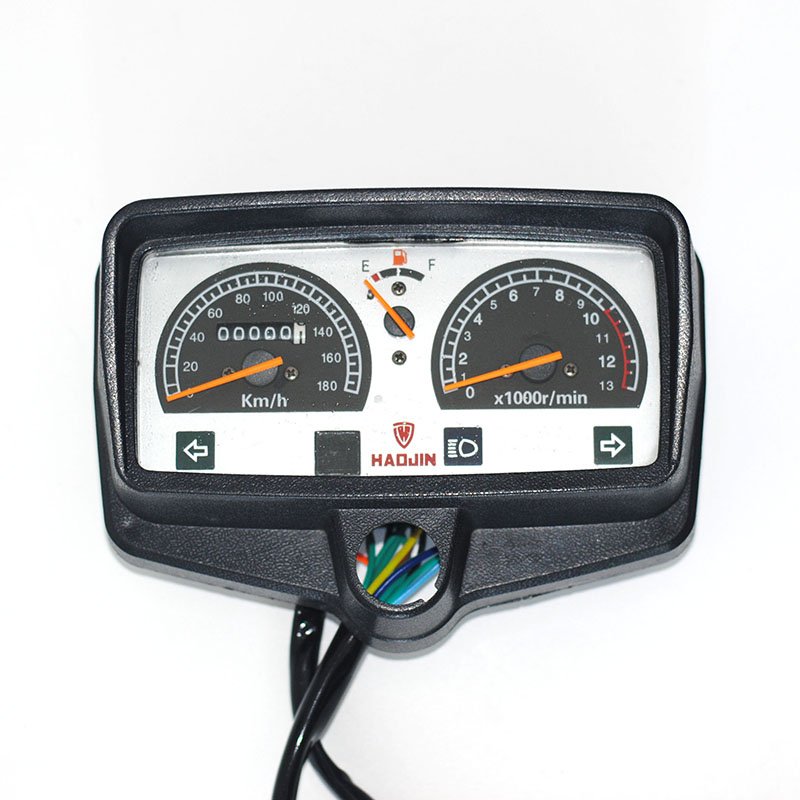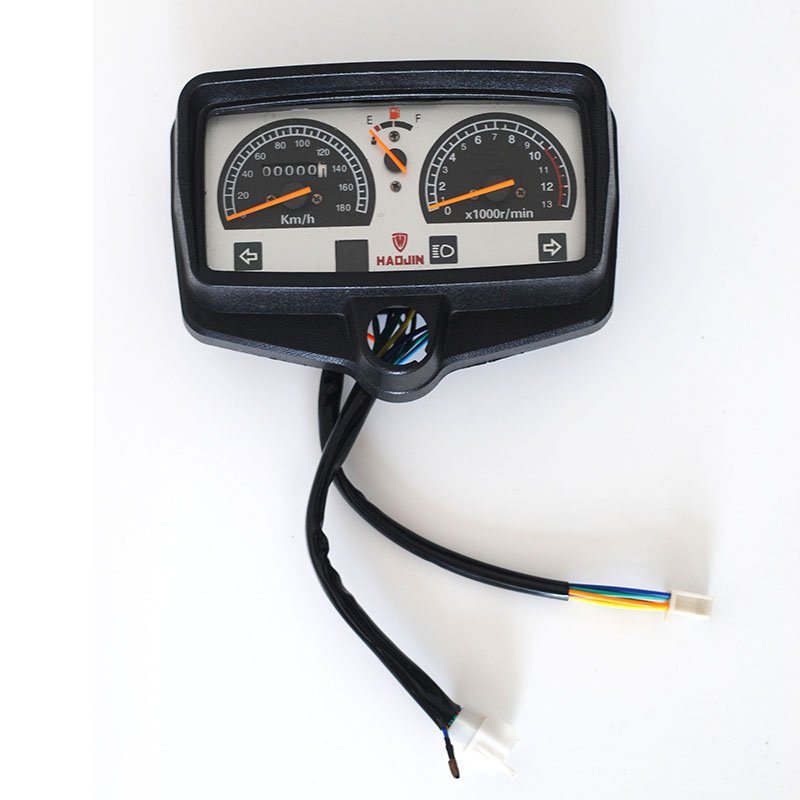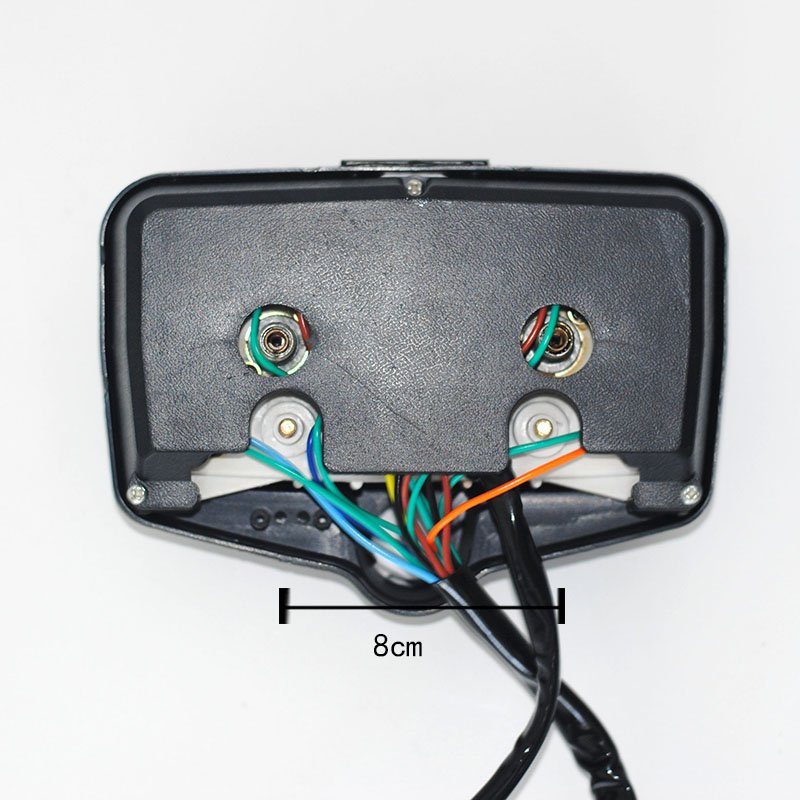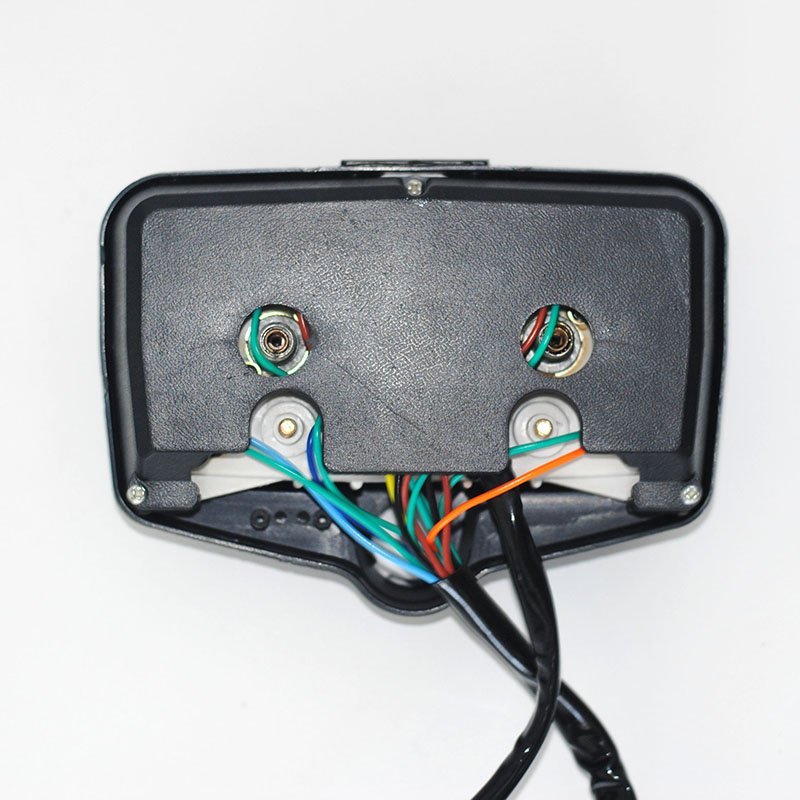When you mount your Haojue motorcycle and are ready to embark on a thrilling journey, have you ever taken a good look at this small dashboard in front of you? Don’t underestimate it. This thing is simply the “Doraemon’s pocket” on your riding journey. It makes all the functions crystal clear and even plays a little “humorous trick” on you from time to time.
The Speedometer: The Cheerful “Speed Deceiver”
Let’s talk about the speedometer. It can be regarded as the “comic actor” in the motorcycle world. You watch with great joy as the needle soars, feeling like you’re about to become the “Messenger of the Wind.” But when you measure it with your mobile phone navigation, hey, the actual speed is much more “modest” than what the dashboard shows. This isn’t Haojue trying to deceive us. There’s such an “unspoken rule” in both the automotive and motorcycle industries. The speed shown on the dashboard should be a little higher than the actual speed, generally allowing an error range of 0 – 4%. Why is that? It’s like wearing a “safety helmet” for you, preventing you from accidentally speeding and getting a ticket. If you’re riding on the highway and the speedometer needle is stylishly pointing at 120, in reality, you might only be dashing along at around 115 – 116. There was a young and inexperienced guy who was riding a Haojue motorcycle. He just stared at the speed on the dashboard and thought he didn’t exceed the limit. But when he was stopped by the traffic police, he realized that because he didn’t consider this error, he was definitely speeding. However, don’t be angry. Just take this error as a little joke from the Haojue engineers, reminding us that safety comes first and we should ride with care.

The Tachometer: The “Emotional Spokesperson” of the Engine
Take a look at the tachometer. It’s like the “megaphone” of the engine, telling you all the “joys, sorrows, anger, and pleasures” of the engine. When the speed is low, the engine is like a lazy guy who just woke up, making a weak “buzzing” sound. Once the speed increases, wow, it immediately turns into an irritable fellow, with a loud and passionate sound. Under different gears, the speed also has its “comfort zone.” For example, in the first gear, the speed is between 3000 – 5000 revolutions per minute, just like the breathing rhythm of a person jogging, very smooth. If it’s in the fifth gear, with the speed between 7000 – 9000 revolutions per minute, then the engine is like an athlete in a 100-meter dash, going all out. If you don’t play by the rules and let the speed “deviate” for a long time, the engine won’t be happy. It will either shake like a sieve or get so hot that it seems to be “smoking” (an exaggeration, of course). So we have to follow its “temper” and shift gears according to the speed to make the ride enjoyable all the way.

The Fuel Gauge: The Most “Miserly” “Fuel Manager”
The fuel gauge plays the role of a “miserly manager” in this dashboard. It keeps a close eye on the fuel in the tank. Once the fuel level drops, it starts to “beat around the bush” (the fuel indicator light comes on). Do you think it’s making a fuss? Don’t take it lightly. If you really wait until it runs out of fuel for you, you’ll have to push your beloved motorcycle and “take a walk” on the roadside. That scene would be extremely embarrassing. So, when the fuel gauge starts to “remind” you, quickly find a gas station and “feed” your motorcycle well. Don’t wait until it “goes on strike” to regret it.
The Odometer: The Most Loyal “Travel Recorder”
The odometer is a loyal “little follower,” silently recording every mile you and your motorcycle have traveled. The total mileage is like a thick travel diary, witnessing the whole process of the vehicle from brand new to a bit “weathered.” The trip meter, on the other hand, is like a small notebook during your journey, which can help you calculate how far you’ve traveled on this short trip. Once, a friend on a whim used the trip meter to measure the distance from home to the company. As a result, there was a little difference each time. Sometimes it was a few hundred meters more, and sometimes a little less. It made him laugh a lot, and he even joked that the odometer might be “naughty” and deliberately playing a number game with him.

The Indicator Lights: A Group of “Chatty” “Little Guards”
The indicator lights on the dashboard are like a group of “chatty” little guards. As soon as there’s a situation, they start to “shine and heat up.” When the turn indicator light flashes, it reminds the surrounding vehicles: “Hey, I’m going to turn. Pay attention!” When the neutral indicator light comes on, it seems to be saying: “Master, it’s in neutral now. Don’t make a mistake in the operation.” And the oil warning light, once it comes on, is like the Tang Monk chanting the Tight Headband Incantation, urging you to check the engine oil immediately. If you ignore it, the “big heart” of the engine, that is, the engine itself, is at risk of stopping working.
The dashboard of the Haojue motorcycle, although small in size, hides so many interesting things. It’s like a sweet and a bit naughty partner, accompanying you on your riding journey, bringing joy and also safeguarding your safety. The next time you ride, you might as well pay more attention to this “Doraemon’s pocket.” Maybe you’ll discover more interesting little details.

